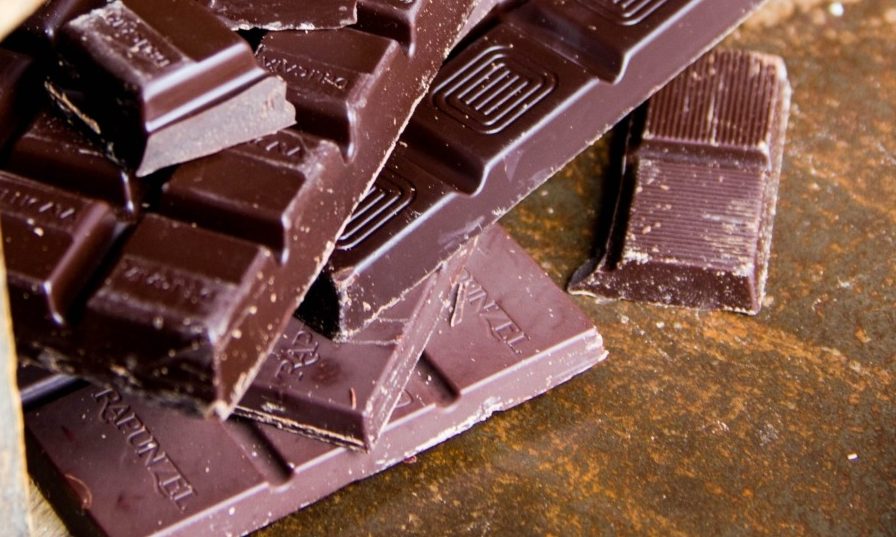Prices are peaking but our chocolate is getting smaller
In a world of inflation, it’s a wonder why our chocolate, crisps and biscuits aren’t also getting more expensive. But don’t get too excited – they might not cost more but their sizes are decreasing.
It all started after Toblerone reduced the weight of its chocolate by adding more spaces between triangles. John Prescott said that Brexit “just got real” whilst Kevin McKenna wrote a bleak opinion piece about the issue for The Guardian.
2,529 products have become smaller, whilst only 614 have increased in size
A study from the Office for National Statistics (ONS) discovered that between January 2012 and June 2017, 2,529 products (2,000 of which were food) have become smaller, whilst only 614 have increased in size. Out of these 2,000 shrinking food products, sugar, jam, syrups, chocolate and confectionery have shrunk the most.
In February this year, the BBC analysed 19 products between 2014 and 2018, and revealed that 18 of the 19 products had shrunk in size. The worst hit by ‘shrinkflation’ in the study was a four-pack of Snickers, which reduced by 28.1%, from 232g to 167g. A 200g bar of Toblerone Milk Chocolate reduced from 200g to 150g, showing a 25% decrease.
Other products hit by ‘shrinkflation’ were a four-pack of Twix Twin Bars, Jaffa Cakes, Hobnobs Milk Chocolate Tube, a three-pack of Yorkie Raisin & Biscuit, Kit Kat Chunky, Yorkie Milk Chocolate, Twix Funsize (bag), a Twix Twin Bar, Yorkie Raisin & Biscuit, Mars Funsize (bag), Snickers (seven pack), Kit Kat Chunky Peanut Butter and Snickers Bites (bag). The reduction sizes for these items ranged from 20% to 12.5%.
Causes of this “shrinkflation” have been widely discussed in recent years, with some saying that sugar importation costs have increased due to the weaker pound
At the lesser end of the scale, 400g bars of Toblerone Fruit and Nut and Toblerone Milk chocolate shrank 10% to 360g between 2014 and 2018, whilst a Kit Kat Four Finger Bar shrank 7.8% from 45g to 42g. The only item out of the 19 analysed that increased in size was a three-pack of Jaffa Cakes, increasing by 5.8% from 450g to 476g within the same time period.
Causes of this “shrinkflation” have been widely discussed in recent years, with some saying that sugar importation costs have increased due to the weaker pound. Many have blamed Brexit for our shrinking sweet treats. However, the ONS study did not find a noticeable change in post-Brexit Britain.
Manufacturers of these goods blame long-term rising material costs. In 2017, Mars told The Telegraph: “Like all chocolate manufacturers, we have seen the cost of raw materials rise and, while we try to absorb these pressures as much as possible, sometimes we have to make the difficult decision to reduce the size of some of our products so our consumers can continue to enjoy an affordable treat.”
However, this seems to only be half the reason for shrinkflation. 20-50% of the cost of a chocolate bar is the sugar and cocoa butter. The price of cocoa butter peaked in 2012, but has now hit a four-year low.
To reduce sugar content in foods, companies can either substitute it for artificial sweeteners or reduce the portion size
The ONS study also pointed out that, since IMF records began in 1991, European sugar import prices are at their lowest.
In 2016, consumers noticed a ‘shrinkage’ in the popular Christmas treat, Terry’s Chocolate Orange. The segments appeared to be ‘hollowed-out’, reducing from 175g to 157g in weight – a cut of 10%. A bag of Maltesers has decreased from 121g to 103g.
A sugar reduction programme by Public Health England, seen as one of the most ambitious food and drink reformulation plans in British history, discourages confectionary companies from bringing out high-sugar products. The programme aims to reduce the sugar content in cereal, yoghurt, biscuits, cakes, confectionery, pastries, ice cream and sweet spreads by 5% in 2017 and 20% in 2020. It also wants to establish an “average and maximum calorie or portion size guidelines for products likely to be consumed by an individual at one time.”
We had to make a decision between changing the shape of the bar, and raising the price [Mondelēz International]
To reduce sugar content in these foods, companies can either substitute it for artificial sweeteners or reduce the portion size. While the former might work for soft drinks, it doesn’t always work for food products. Artificial sweeteners can change a product’s taste or constitution – for example, jams can grow mould, chocolate ‘spread’ can become more like sauce and chocolate, as well as tasting worse, and they can also have a somewhat laxative effect.
In a statement made on their Facebook page, the company which owns Toblerone said: “We had to make a decision between changing the shape of the bar, and raising the price.
“We chose to change the shape to keep the product affordable for our customers, and it enables us to keep offering a great value product.”

Comments (1)